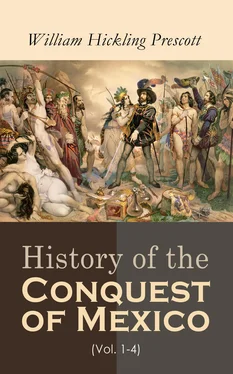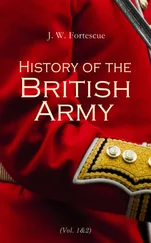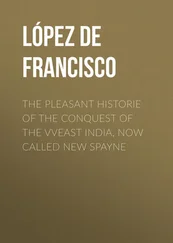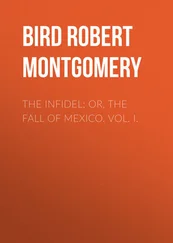[60]Boturini, Idea, p. 87.—Torquemada, Monarch. Ind., lib. 11, cap. 26.—Zurita compares this body to the Castilian córtes. It would seem, however, according to him, to have consisted only of twelve principal judges, besides the king. His meaning is somewhat doubtful. (Rapport, pp. 94, 101, 106.) M. de Humboldt, in his account of the Aztec courts, has confounded them with the Tezcucan. Comp. Vues des Cordillères et Monumens des Peuples indigènes de l’Amérique (Paris, 1810), p. 55, and Clavigero, Stor. del Messico, tom. ii. pp. 128, 129.
[61]“If this should be done now, what an excellent thing it would be!” exclaims Sahagun’s Mexican editor. Hist. de Nueva-España, tom. ii. p. 304, nota.—Zurita, Rapport, p. 102.—Torquemada, Monarch. Ind., ubi supra.—Ixtlilxochitl, Hist. Chich., MS., cap. 67.
[62][There is a hint here of the “Compurgators” of the Germanic tribes.—M.]
[63]Zurita, Rapport, pp. 95, 100, 103.—Sahagun, Hist. de Nueva-España, loc. cit.—Humboldt, Vues des Cordillères, pp. 55, 56.—Torquemada, Monarch. Ind., lib. 11, cap. 25.—Clavigero says the accused might free himself by oath: “il reo poteva purgarsi col giuramento.” (Stor. del Messico, tom. ii. p. 129.) What rogue, then, could ever have been convicted?
[64]Ixtlilxochitl, Hist. Chich., MS., cap. 36.—These various objects had a symbolical meaning, according to Boturini, Idea, p. 84.
[65][Compare the “codes” of the Germanic races.—M.]
[66]Paintings of the Mendoza Collection, Pl. 72, and Interpretation, ap. Antiq. of Mexico, vol. vi. p. 87.—Torquemada, Monarch. Ind., lib. 12, cap. 7.—Clavigero, Stor. del Messico, tom. ii. pp. 130-134.—Camargo, Hist. de Tlascala, MS.—They could scarcely have been an intemperate people, with these heavy penalties hanging over them. Indeed, Zurita bears testimony that those Spaniards who thought they were greatly erred. (Rapport, p. 112.) M. Ternaux’s translation of a passage of the Anonymous Conqueror, “aucun peuple n’est aussi sobre” (Recueil de Pièces relatives à la Conquête du Mexique, ap. Voyages, etc. (Paris, 1838), p. 54), may give a more favorable impression, however, than that intended by his original, whose remark is confined to abstemiousness in eating. See the Relatione, ap. Ramusio, Raccolta delle Navigationi et Viaggi (Venetia, 1554-1565).
[67]In ancient Egypt the child of a slave was born free, if the father were free. (Diodorus, Bibl. Hist., lib. 1, sec. 80.) This, though more liberal than the code of most countries, fell short of the Mexican.
[68]In Egypt the same penalty was attached to the murder of a slave as to that of a freeman. (Ibid., lib. 1, sec. 77.) Robertson speaks of a class of slaves held so cheap in the eye of the Mexican law that one might kill them with impunity. (History of America (ed. London, 1776), vol. iii. p. 164.) This, however, was not in Mexico, but in Nicaragua (see his own authority, Herrera, Hist. general, dec. 3, lib. 4, cap. 2), a distant country, not incorporated in the Mexican empire, and with laws and institutions very different from those of the latter.
[69][A “collared” slave was fastened at night to a wall by his wooden collar.—M.]
[70]Torquemada, Monarch. Ind., lib. 12, cap. 15; lib. 14, cap. 16, 17.—Sahagun, Hist. de Nueva-España, lib. 8, cap. 14.—Clavigero, Stor. del Messico, tom. ii. pp. 134-136.
[71]Ixtlilxochitl, Hist. Chich., MS., cap. 38, and Relaciones, MS.—The Tezcucan code, indeed, as digested under the great Nezahualcoyotl, formed the basis of the Mexican, in the latter days of the empire. Zurita, Rapport, p. 95.
[72]In this, at least, they did not resemble the Romans; of whom their countryman could boast, “Gloriari licet, nulli gentium mitiores placuisse pœnas.” Livy, Hist., lib. 1, cap. 28.
[73][For “crown lands” read “subject tribes”; for “king’s palaces,” “communal houses.”—M.]
[74]The Tezcucan revenues were, in like manner, paid in the produce of the country. The various branches of the royal expenditure were defrayed by specified towns and districts; and the whole arrangements here, and in Mexico, bore a remarkable resemblance to the financial regulations of the Persian empire, as reported by the Greek writers (see Herodotus, Clio, sec. 192); with this difference, however, that the towns of Persia proper were not burdened with tributes, like the conquered cities. Idem, Thalia, sec. 97.
[75]Lorenzana, Hist. de Nueva-España, p. 172.—Torquemada, Monarch. Ind., lib. 2, cap. 89; lib. 14, cap. 7.—Boturini, Idea, p. 166.—Camargo, Hist. de Tlascala, MS.—Herrera, Hist. general, dec. 2, lib. 7, cap. 13.—The people of the provinces were distributed into calpulli , or tribes, who held the lands of the neighborhood in common. Officers of their own appointment parcelled out these lands among the several families of the calpulli ; and on the extinction or removal of a family its lands reverted to the common stock, to be again distributed. The individual proprietor had no power to alienate them. The laws regulating these matters were very precise, and had existed ever since the occupation of the country by the Aztecs. Zurita, Rapport, pp. 51-62.
[76]The following items of the tribute furnished by different cities will give a more precise idea of its nature:—20 chests of ground chocolate; 40 pieces of armor, of a particular device; 2400 loads of large mantles, of twisted cloth; 800 loads of small mantles, of rich wearing-apparel; 5 pieces of armor, of rich feathers; 60 pieces of armor, of common feathers; a chest of beans; a chest of chian; a chest of maize; 8000 reams of paper; likewise 2000 loaves of very white salt, refined in the shape of a mould, for the consumption only of the lords of Mexico; 8000 lumps of unrefined copal; 400 small baskets of white refined copal; 100 copper axes; 80 loads of red chocolate; 800 xícaros , out of which they drank chocolate; a little vessel of small turquoise stones; 4 chests of timber, full of maize; 4000 loads of lime; tiles of gold, of the size of an oyster, and as thick as the finger; 40 bags of cochineal; 20 bags of gold dust, of the finest quality; a diadem of gold, of a specified pattern; 20 lip-jewels of clear amber, ornamented with gold; 200 loads of chocolate; 100 pots or jars of liquid-amber; 8000 handfuls of rich scarlet feathers; 40 tiger-skins; 1600 bundles of cotton, etc., etc. Col. de Mendoza, part 2, ap. Antiq. of Mexico, vols. i., vi.{*}
{*} [From those too poor to pay the regular taxes, snakes, scorpions, centipedes, and vermin were exacted. “It is related that soon after Cortés arrived in the city of Mexico certain cavaliers of his force ... were roaming through the royal palace, ... when they came across some bags filled with some soft, fine, and weighty material.... They hastened to untie one of the sacks and found its contents to consist of nothing but lice, which had been paid as a tribute by the poor.” Bancroft, Native Races, vol. ii. p. 235. Torquemada, Monarch. Ind., tom. i. p. 461.—M.]
[77]Mapa de Tributos, ap. Lorenzana, Hist. de Nueva-España.—Tribute-roll, ap. Antiq. of Mexico, vol. i., and Interpretation, vol. vi., pp. 17-44.—The Mendoza Collection, in the Bodleian Library at Oxford, contains a roll of the cities of the Mexican empire, with the specific tributes exacted from them. It is a copy made after the Conquest, with a pen, on European paper. (See Foreign Quarterly Review, No. XVII. Art. 4.) An original painting of the same roll was in Boturini’s museum. Lorenzana has given us engravings of it, in which the outlines of the Oxford copy are filled up, though somewhat rudely. Clavigero considers the explanations in Lorenzana’s edition very inaccurate (Stor. del Messico, tom. i. p. 25), a judgment confirmed by Aglio, who has transcribed the entire collection of the Mendoza papers, in the first volume of the Antiquities of Mexico. It would have much facilitated reference to his plates if they had been numbered;—a strange omission!
Читать дальше












